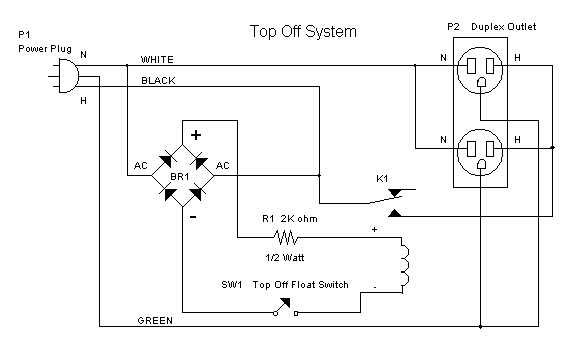
 |
|
#11
|
|||||
|
|||||
|
Quote:
Steve
__________________
 *everything said above is just my opinion, and may or may not reflect the views of this BBS, its Operators, and its Members. If cornered on any “opinion” I post I will totally deny having ever said this in a Court of Law…Unless I am the right one* *everything said above is just my opinion, and may or may not reflect the views of this BBS, its Operators, and its Members. If cornered on any “opinion” I post I will totally deny having ever said this in a Court of Law…Unless I am the right one*Some strive to be perfect.... I just strive. |
|
#12
|
|||||
|
|||||
|
What happens if your float valve fails with 110g of freshwater?
Nice DIY job, btw! |
|
#13
|
||||
|
||||
|
In both situations if the float value fails you have a problem/same problem don't you?
Dave Oh ya very nice DIY job for sure, what do you think it cost you to make? |
|
#14
|
|||||
|
|||||
|
The total cost for everything was roughly $50.
|
|
#15
|
||||
|
||||
|
Would it be possible for you to post a part list, where you got them and the plans? I'd like to make it too! (Excellent work!)
|
|
#16
|
|||||
|
|||||
|
While I don't have an exact parts list, I can tell you what I used:
Essentials Project Box ~$7 (Active Electronics) 120VAC -> 24VDC Transformer ~$13 (Active Electronics) Float Switch ~$12 (fellow reefer) DPDT Solid State Relay ~$5 (Active Electronics) Extension cord (10m) ~$10 (Cnd Tire) Misc Parts/tools Solder Grommets Merets Twist Ties Old 35mm film cannister Door hooks Nylon nuts/bolts Multimeter It took me about 1 hr to do. The longest part is the hanging bracket. Takes me forever to drill all those little holes. I don't have a schematic as I didn't really follow a particular one. I had my friend who has done a lot with electronics come by and help me figure out the relay as I've never used them before, but once that was sorted out, it went fairly smoothly. You can use this schematic taken from ReefKeeping.com:  (if the picture doesn't load, go to the article found here: http://reefkeeping.com/issues/2002-03/jg/index.htm) A couple of things I don't like about this particular box is that 1)the wires from the switch are very short. As a result, if you are mounting the float switch in your tank, you'll need to put the box either in your canopy or somehow mount it on the aquarium since the cord won't reach if you place it on the floor. 2) the box is quite large. I need to figure out a way to cram everything into a smaller box so it doesn't take up as much space. |
|
#17
|
|||||
|
|||||
|
This was how I was going to hook my RO/DI system to my tank via a float switch. The solenoid is in the off (closed) position until the float switch calls for water and opens it...I guess the only way it could fail is if your float switch got stuck in the down position some how...the same idea as the ones used on reactors except this one is all plastic instead of brass. The one question is if you are using this for RO why couldn't you use the brass one if it isn't coming in contact with the salt water?

__________________
Getten Outta Dodge |
|
#18
|
|||||
|
|||||
|
Hi, if you still need a schematic there is one in this thread:
http://www.canreef.com/phpBB2/viewto...738&highlight= For extending the wiring to the float switch I used some wiring of the same gauge and used a 2 wire connector that I got at Radio Shack for a couple of bucks. It also makes taking the float switch out for cleaning a breeze. I also used a manual on/off switch which I use for water changes as I am sump less. Hope this helps Dave |
|
#19
|
|||||
|
|||||
|
Hi Dave,
Did you use a solid state relay or a mechanical relay on your auto topoff? |
|
#20
|
|||||
|
|||||
|
Harvey, well I don't know much about electronic gadgets but I think it is solid state. It is a small sealed black device with connections on it and it goes click when energized
 Are the mechanical relays clear so that you can see the contacts? Told ya I don't know much about this stuff! Dave |